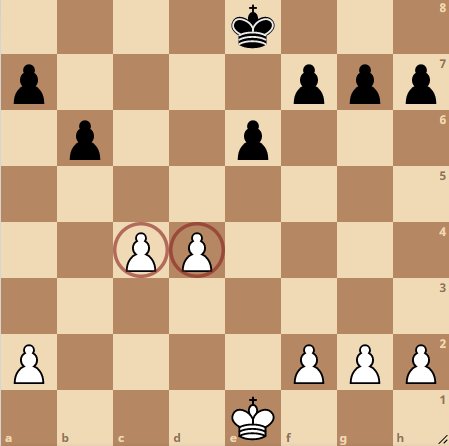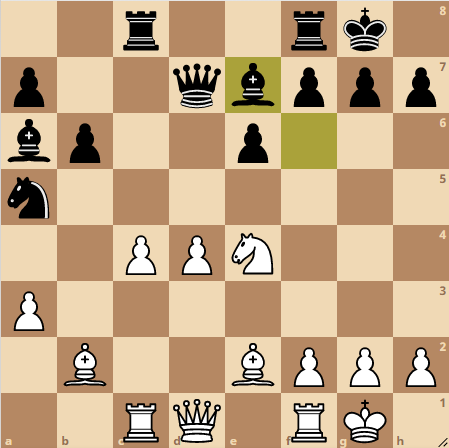13 Sep Hanging Pawns
What are Hanging Pawns?
Pawns on adjacent files that are away or separated from the remaining pawns and pawn structures are known as “Hanging Pawns”.
Let’s take a look at an example of this term coined by Wilhelm Steinitz:

Hanging Pawns have a few strengths and weaknesses:
Strengths
This allows a possibility to have open files and an increase in space to open up the position. Hanging pawns also allow control over key squares that can be used as outpost squares for Knights or Bishops.
Weaknesses
Hanging pawns are very vulnerable and can only be defended by pieces since there are no adjacent pawns. These pawns can be used as the center for an attack forcing the player to use all the pieces to protect these pawns, adding a positional disadvantage to the player’s game.
This also allows hanging pawns to be easily exchanged. These pawns can even be attacked with a pawn to force an exchange of pawns resulting in an isolated pawn. Further, if the opponent forces the advancement of one of these pawns, the other pawn will be left behind as a “Backward Pawn.”
How to play with Hanging Pawns:
These pawns should be promoted in a way that allows the development of the pieces behind them.
Hanging Pawns should be converted into strong passed pawns.
Avoid any blocks in the promotion of these pawns.
If you cannot do any of the above, try to counterplay using the adjacent files of the hanging pawns. This may even cost a pawn in some situations. In the following example, White has two hanging pawns on the c & d file.

White plans to move the d pawn to d5 on the next move to take open the file for the White Bishop on the b2 square.
How to play against Hanging Pawns
The idea is to block these pawns and to force promotion of one of the two adjacent pawns to either create an isolated pawn or a backward pawn.
Openings where Hanging Pawns are seen
Hanging pawns may arise in middle games as a consequence of changes in different openings. However, there are some specific openings that can lead to such pawn structures.
1. Queen’s Gambit
This is the most common opening where hanging pawns are seen either for White or Black. The Tartakower variation is the best example for such a pawn structure.
2. Petrov Defense
Hanging pawns arise early in the game with Petrov Defense

Here, White tries to push the central pawns forward and tries to create a passed pawn out of the pawn on the ‘d’ file.
3. Sicilian Alapin
Hanging Pawns are considered a good addition to Sicilian Alapin opening as their potential is exploited to the fullest in the middle game.
For further reading on the topic “hanging pawns” refer to the following links:



